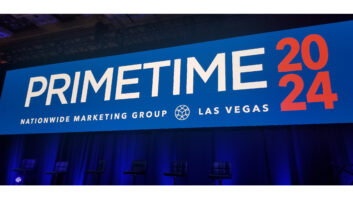Bellevue, Wash. – T-Mobile isn’t buying growth and is “setting the stage to significantly grow the bottom line” in the future, president/CEO John Legere said in announcing the carrier’s record-breaking first-quarter subscriber results.
T-Mobile posted 2.39 million net subscriber additions, marking the first-ever quarter of more than 2 million net adds for the company, but the carrier posted its fourth consecutive quarterly net loss, which grew to $151 million in the quarter.
During an investors’ conference call, Legere and other executives explained how T-Mobile will become profitable.
For one thing, they said, unlike AT&T and Verizon, the vast majority of T-Mobile’s branded net adds in the quarter were from smartphone subscriptions, not from less-profitable tablet subscriptions.
Of T-Mobile’s 1.3 million branded postpaid net adds in the quarter, 1.2 million were smartphones, Legere said. Mobile broadband net adds came to 67,000, mainly in the form of tablets, “and we’re just getting started,” he said of the carrier’s tablet plans. “We’ve only started to innovate in this space.”
Operation Tablet Freedom launched only a couple of weeks ago, Legere noted, and early response has been “phenomenal.” He also said T-Mobile began selling the iPad only in the fourth quarter.
Competitors are relying on net adds of less-profitable tablets to boost their net-add figures because “it’s all they got,” , added executive VP/CMO Mike Sievert. T-Mobile, in contrast, wants to grow both phone and tablet net adds, he said.
As for smartphone net adds, T-Mobile gained more postpaid net adds that its three competitors combined in the quarter, Legere said. “T-Mobile captured virtually all industry phone growth.”
Another factor that will eventually bring profits is the quality of the company’s new subscribers, Sievert said. T-Mobile is “bringing in the highest quality customers in our history.”
Although the first quarter was historically very competitive, T-Mobile gained subscribers by “solving customer pain points,” not by reducing prices, Legere said. And the company “is not anywhere close to finished” in removing other industry pain points, he said. T-Mobile is gaining subscribers because of “great service on a nationwide LTE network,” programs that give consumers devices when and how they want them, and simple plans, he said.
Other factors that will improve profitability are synergies accruing from the year-old acquisition of prepaid carrier MetroPCS and the shutdown of its CDMA network to add capacity to T-Mobile’s GSM/HSPA/LTE network, said CFO Braxton Carter. The synergies are “coming in ahead of expectations,” Legere said.
“Other internal initiatives” will also improve profitability, Carter said.
Reduced churn will also aid profitability, and churn reduction is “well ahead of plan,” Legere said. Postpaid branded churn fell to 1.5 percent in the quarter and is ahead of a plan to bring it down to 1.7 percent at the end of 2016 from 2.5 percent, he said. Churn could go lower with network enhancements, he added.
Those enhancements include the rollout of LTE to 700MHz spectrum, which the carrier acquired from Verizon and will deploy in 2014 to deliver improved in-building performance and better coverage of suburban fringe areas, said CTO Neville Ray. The 700MHz spectrum covers areas with a combined population of 158 million, or 50 percent of the U.S. population, said Legere.
Even without the 700MHz spectrum, Ray claimed that T-Mobile has widened the gap in LTE download speeds between it and its competitors, also helping drive customers to T-Mobile.
Average LTE download speeds have hit 16.9Mbps on the T-Mobile network compared to 15.5Mbps at Verizon, 14MBps at AT&T, and 8.1Mbps at Sprint, Legere noted.
The carrier’s network will be able to support future subscriber growth, said Ray. The company is adding density and breath to its LTE footprint, implementing speed enhancements with new backhaul, and adding MetroPCS spectrum to the T-Mobile network. “We’re in a great place,” he said of the network’s capacity to support subscriber growth.
T-Mobile’s LTE network already reaches more than 220 million people in 284 metro areas and will expand to more than 250 million people by year’s end.
To accelerate download speeds, the company has implemented 10+10MHz LTE channels in 43 of the top 50 metro areas and 15+15MHz channels in nine metro areas with a total of 19 by the end of the year. LTE channels of 20+20MHz are in two markets and will be rolled out to a total of seven by the end of the year. The current two markets deliver average download speeds of 20-30Mbps with peaks closing in on 150Mbps, Legere said.













